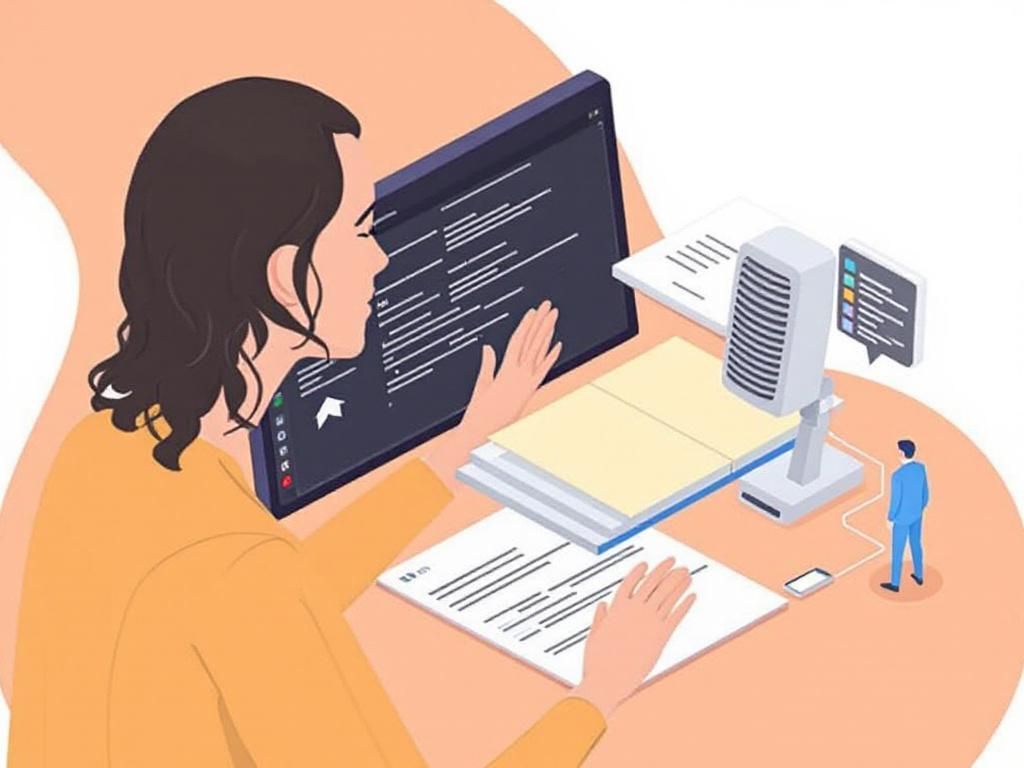In today’s fast-paced digital landscape, the demand for efficient communication tools continues to grow. Enterprises are increasingly relying on speech-to-text technology to enhance productivity, streamline operations, and improve accessibility. As we look ahead to 2025, it’s crucial to explore the leading speech-to-text solutions available for businesses, understand their features, and identify which might best serve various organizational needs.
Understanding Speech-to-Text Technology
Speech-to-text (STT) technology, also known as automatic speech recognition (ASR), converts spoken language into written text. This transformative technology uses advanced algorithms and machine learning to recognize speech patterns, enabling users to dictate notes, transcribe meetings, and interact with devices vocally. Below are some key components of speech-to-text technology:
- Acoustic Model: Represents the relationship between audio signals and phonetic units.
- Language Model: Predicts word sequences to enhance recognition accuracy.
- Decoder: Integrates acoustic and language models to generate text output.
Key Benefits of Speech-to-Text Solutions
Implementing speech-to-text solutions within an enterprise can yield numerous advantages:
- Increased Efficiency: Automates documentation, allowing employees to focus on more critical tasks.
- Enhanced Accessibility: Improves access to information for individuals with disabilities.
- Cost Savings: Reduces the need for manual transcription services.
- Multilingual Support: Many platforms support multiple languages and dialects, accommodating global teams.
Top Speech-to-Text Solutions for Enterprises in 2025
As we approach 2025, several speech-to-text solutions stand out due to their advanced features, scalability, and integration capabilities. Below is a detailed overview of the top contenders:
1. Google Speech-to-Text
Google’s STT service leverages cutting-edge machine learning technologies to deliver highly accurate transcriptions. Key features include:
- Support for over 120 languages and dialects
- Real-time transcription capabilities
- Integration with other Google Cloud services
Usage Scenarios:
- Transcribing meetings and conferences
- Creating captions for videos
- Voice assistant applications
2. Microsoft Azure Speech Service
Part of the Azure cloud platform, Microsoft’s solution offers robust speech recognition capabilities, with features such as:
- Customizable vocabulary for industry-specific terms
- Real-time and batch transcription options
- Seamless integration with Microsoft 365 applications
Usage Scenarios:
- Customer service automation
- Transcription of legal and medical records
- Voice-controlled applications
3. IBM Watson Speech to Text
IBM Watson is renowned for its artificial intelligence prowess, and its speech-to-text service is no exception. Highlights include:
- Accurate transcriptions powered by deep learning
- Support for various audio formats
- Customization for industry-specific jargon
Usage Scenarios:
- Market research and data analysis
- Transcribing interviews for HR or journalism
- Enhanced accessibility features
4. Rev.ai
Rev.ai is a dedicated transcription service that combines ASR with human editing for enhanced accuracy. Its key features include:
- High accuracy rate, especially in noisy environments
- Quick turnaround times
- API access for integration with third-party applications
Usage Scenarios:
- Video and audio content transcription
- Real-time captions for live events
- Academic research transcription
5. Otter.ai
Otter.ai is designed for team collaboration and is especially popular in meeting and conference settings. Its features include:
- Instant note-taking and transcription during meetings
- Integration with Zoom and other conferencing tools
- Speaker identification capabilities
Usage Scenarios:
- Collaborative note-taking during meetings
- Generating meeting minutes automatically
- Voice memos for personal productivity
Implementing Speech-to-Text Solutions
When considering a speech-to-text solution, enterprises should assess the following factors:
- Compatibility: Ensure the solution integrates well with existing systems and workflows.
- Scalability: Choose a solution that can grow with the organization.
- Budget: Evaluate pricing models, including pay-as-you-go versus subscription services.
- Security: Consider data privacy and compliance with regulations such as GDPR or HIPAA.
Future Trends in Speech-to-Text Technology
As we move into 2025, several trends are likely to shape the speech-to-text landscape:
- Improved Accuracy: Continuous advancements in artificial intelligence will lead to higher accuracy rates, particularly in noisy environments.
- Real-Time Translation: Integrating speech-to-text with translation services to facilitate multilingual communication.
- Customization: Greater opportunities for enterprises to customize models to recognize industry-specific vocabulary effectively.
- Emotional Recognition: Future systems may incorporate sentiment analysis to gauge the speaker’s emotional state.
Conclusion
In an increasingly digital world, speech-to-text technology offers enterprises a powerful tool for improving efficiency and accessibility. By understanding the top solutions available in 2025 and recognizing the key trends shaping the future of this technology, organizations can make informed decisions that support their growth and innovation strategies. Adopting the right speech-to-text solution can ultimately enhance collaboration, streamline workflows, and drive productivity across teams.
FAQ
What are the top speech-to-text solutions for enterprises in 2025?
In 2025, top speech-to-text solutions for enterprises include Google Cloud Speech-to-Text, Microsoft Azure Speech Service, IBM Watson Speech to Text, Rev.ai, and Otter.ai, each offering unique features tailored for business needs.
How do speech-to-text solutions improve productivity in enterprises?
Speech-to-text solutions enhance productivity by automating transcription processes, enabling faster documentation, facilitating real-time communication, and allowing employees to focus on core tasks rather than manual note-taking.
What industries benefit most from speech-to-text technology?
Industries such as healthcare, legal, education, and customer service benefit significantly from speech-to-text technology, as it streamlines workflows, improves accuracy in documentation, and enhances customer interactions.
Are speech-to-text solutions secure for enterprise use?
Most leading speech-to-text solutions prioritize security, offering encryption, compliance with industry standards, and customizable privacy settings to ensure that sensitive enterprise data is protected.
Can speech-to-text solutions integrate with existing enterprise software?
Yes, many speech-to-text solutions offer APIs and integration capabilities that allow seamless connectivity with existing enterprise software, enhancing functionality and streamlining operations.
What features should enterprises look for in speech-to-text software?
Enterprises should look for features such as high accuracy rates, multi-language support, speaker identification, real-time transcription, and user-friendly interfaces to ensure the software meets their specific needs.




